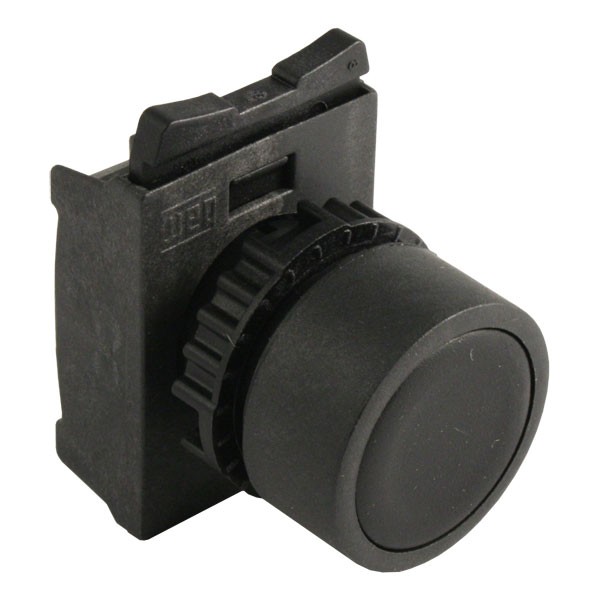Relays are widely used in control circuits. They are used for switching multiple control circuits and for controlling light loads such as starting coils, pilot lights, and audible alarms.
The operation of a control relay is similar to a cont-actor. In the following example a relay with a set of normally open (NO) contacts is used. When power is applied from the control circuit, an electromagnetic coil is energized. The resultant electromagnetic field pulls the armature and movable contacts toward the electromagnet closing the contacts. When power is removed, spring tension pushes the armature and movable contacts away from the electromagnet opening the contacts.
A relay can contain normally open, normally closed, or both types of contacts. The main difference between a control relay and a cont-actor is the size and number of contacts. The contacts in a control relay are relatively small because they need to handle only the small currents used in control circuits. There are no power contacts. Also, unlike a cont-actor, each contact in a control relay controls a different circuit. In a cont-actor, they all control the starting and stopping of the motor. Some relays have a greater number of contacts than are found in the typical cont-actor. The use of contacts in relays can be complex. There are three words which must be understood when dealing with relays.
Pole describes the number of isolated circuits that can pass through the relay at one time. A single-pole circuit can carry current through one circuit. A double-pole circuit can carry current through two circuits simultaneously. The two circuits are mechanically connected so that they open or close at the same time.
Throw is the number of different closed-contact positions per pole. This is the total number of different circuits each pole controls.
The following abbreviations are frequently used to indicate
contact configurations:
Single-Pole, Single-Throw
Single-Pole, Double-Throw
Double-Pole, Single-Throw
Double-Pole, Double-Throw
Break is the number of separate contacts the switch contacts use to open or close individual circuits. If the switch breaks the circuit in one place, it is a single-break. If the relay breaks the circuit in two places, it is a double-break.
The operation of a control relay is similar to a cont-actor. In the following example a relay with a set of normally open (NO) contacts is used. When power is applied from the control circuit, an electromagnetic coil is energized. The resultant electromagnetic field pulls the armature and movable contacts toward the electromagnet closing the contacts. When power is removed, spring tension pushes the armature and movable contacts away from the electromagnet opening the contacts.
A relay can contain normally open, normally closed, or both types of contacts. The main difference between a control relay and a cont-actor is the size and number of contacts. The contacts in a control relay are relatively small because they need to handle only the small currents used in control circuits. There are no power contacts. Also, unlike a cont-actor, each contact in a control relay controls a different circuit. In a cont-actor, they all control the starting and stopping of the motor. Some relays have a greater number of contacts than are found in the typical cont-actor. The use of contacts in relays can be complex. There are three words which must be understood when dealing with relays.
Pole describes the number of isolated circuits that can pass through the relay at one time. A single-pole circuit can carry current through one circuit. A double-pole circuit can carry current through two circuits simultaneously. The two circuits are mechanically connected so that they open or close at the same time.
Throw is the number of different closed-contact positions per pole. This is the total number of different circuits each pole controls.
The following abbreviations are frequently used to indicate
contact configurations:
Single-Pole, Single-Throw
Single-Pole, Double-Throw
Double-Pole, Single-Throw
Double-Pole, Double-Throw
Break is the number of separate contacts the switch contacts use to open or close individual circuits. If the switch breaks the circuit in one place, it is a single-break. If the relay breaks the circuit in two places, it is a double-break.
